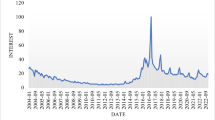Abstract
A campus butterfly garden is a useful teaching resource for studying insect ecology because students can learn about a butterfly’s life cycle and become familiar with its habitual behavior by breeding and observation activities. However, it requires professional construction and maintenance for sustainable development, so very few schools can afford to own a butterfly garden. In this study, the augmented reality and mobile learning technologies have been used to develop a virtual butterfly ecological system by combining with campus host plants and virtual breeding activities. Students can use smart phones or tablet PCs to breed virtual butterflies on host plants and observe their life cycles at different growing stages. Using the available space in campus, a virtual butterfly garden can also be created as a greenhouse where students are able to observe different species of butterflies using the tracking telescope and catch a butterfly to obtain its information by touch-screen control. The virtual butterfly ecological system can increase the learning motivation and interest of students through virtual breeding and observation activities, so it is a suitable assistant tool for science education. A teaching experiment has been conducted to investigate students’ learning effectiveness and attitudes after using the system, and the results show that using the virtual butterfly ecological system can improve their learning effectively.















Similar content being viewed by others
References
Azuma RT (1997) A survey of augmented reality. Teleop Virtual Environ 6(4):355–385
Billinghurst M, Kato H, Poupyrev I (2001) The magicbook-moving seamlessly between reality and virtuality. Comput Gr Appl 21(3):2–4
Brown JS, Collins A, Duguid P (1989) Situated cognition and the culture of learning. Educ Res 18(1):32–42
Campbell T, Wang SK, Hsu H-Y, Duffy AM, Wolf PG (2010) Learning with web tools, simulations, and other technologies in science classrooms. J Sci Educ Technol 19(5):505–511
Chen WS (1988) Butterflies of Taiwan. Taiwan Provincial Museum, Taipei
Chen YS, Kao TC, Sheu JP (2003) A mobile learning system for scaffolding bird watching learning. J Comput Assist Learn 19(3):347–359
Chen YS, Kao TC, Sheu JP (2004) A mobile butterfly-watching learning system for supporting independent learning. In: Proceedings of IEEE workshop on wireless and mobile technologies in education, Taiwan, pp 11–18
Chen Y-C, Chi H-L, Hung W-H, Kang S-C (2011) Use of tangible and augmented reality models in engineering graphics courses. J Prof Issues Eng Educ Pract 137(4):267–276
Dalgarno B, Lee MJW (2010) What are the learning affordances of 3-D virtual environments? Br J Educ Technol 41(1):10–32
Dede C (2009) Immersive interfaces for engagement and learning. Science 323(5910):66–69
Dunleavy M, Dede C, Mitchell R (2009) Affordances and limitations of immersive participatory augmented reality simulations for teaching and learning. J Sci Educ Technol 18(1):7–22
Harris (2006) Go in mobile. http://www.learning.circuits.org/2001/jul2001/harris.html. Retrieved 5 May 2006
Hsu TY, Chen CM (2010) A mobile learning module for high school fieldwork. J Geogr 109(4):141–149
Huang TY (2010) A research on combining QR-code and wireless networks to develop an interactive digital learning system for ecological education in an elementary school campus. In: Technical Report, National Science Council (NSC 97-2511-S-153-004)
Johnson LF, Levine A, Smith RS, Haywood K (2010) Key emerging technologies for elementary and secondary education. Educ Dig 76(1):36–40
Klopfer E, Sheldon J (2010) Augmenting your own reality: student authoring of science-based augmented reality games. New Dir Youth Dev 128:85–94
Lee CY, Wang SY (1986) The observation and breeding of butterflies. Taiwan Provincial Museum, Taipei
Likert R (1932) A technique for the measurement of attitudes. Arch Psychol 22(40):1–55
Lin Y-S (2008) Development and effectiveness analysis of a ubiquitous collaborative learning system—a case study on the butterfly and ecology course of an elementary school. In: Master Thesis, National University of Tainan, Department of Information and Learning Technology, Tainan
Liu TC, Wang HY, Liang JK, Chan TW, Ko HW, Yang JC (2003) Wireless and mobile technologies to enhance teaching and learning. J Comput Assist Learn 19(3):371–382
Martin S, Diaz G, Sancristobal E, Gil R, Castro M, Peire J (2011) New technology trends in education: seven years of forecasts and convergence. Comput Educ 57(3):1893–1906
Ministry of Education (2006) General guidelines of grades 1–9 science and life technology curriculum. Ministry of Education, Taipei
Mistler-Jackson M, Songer B (2000) Student motivation and Internet technology: are students empowered to learn science? J Res Sci Teach 37:459–479
Schilit WN (1995) A system architecture for context-aware mobile computing. In: Unpublished doctoral thesis, Columbia University
Schiller J, Voisard A (2004) Location-based services. Morgan Kaufmann, San Francisco
Shih JL, Hwang GJ, Chu YC (2010) The development and instructional application of u-library on butterfly and wetland ecology for context-aware ubiquitous learning. Int J Mob Learn Organ 4(3):253–268
ShiVa3D (2013) http://www.shivaengine.com
Wu H-K, Lee SW-Y, Chang H-Y, Liang J-C (2013) Current status, opportunities and challenges of augmented reality in education. Comput Educ 62:41–49
Acknowledgments
The authors would like to thank for the financial support of the National Science Council (NSC), Taiwan, ROC, under the contract number NSC 100-2511-S-134-003.
Author information
Authors and Affiliations
Corresponding author
Rights and permissions
About this article
Cite this article
Tarng, W., Ou, KL., Yu, CS. et al. Development of a virtual butterfly ecological system based on augmented reality and mobile learning technologies. Virtual Reality 19, 253–266 (2015). https://doi.org/10.1007/s10055-015-0265-5
Received:
Accepted:
Published:
Issue Date:
DOI: https://doi.org/10.1007/s10055-015-0265-5




